Cosmelan® Peel
The Cosmelan Peel is a medical-grade chemical peel that diminishes hyperpigmentation and melasma to create a clear, radiant, even-toned complexion. This chemical peel consists of an in-office application of Cosmelan 1, performed by Dr. Hudson, and the use of at-home maintenance skincare products, including the Cosmelan 2 depigmenting cream. This depigmentation treatment can reduce unwanted hyperpigmentation by up to 95%. With few potential side effects, minimal downtime, and consistently stunning cosmetic results, the Cosmelan treatment is one of the most popular chemical peels provided by Dr. Hudson at Regenesis Medical Spa in New Orleans.
What types of hyperpigmentation does the Cosmelan peel treat?
Most cases of melasma and hyperpigmentation are best treated with a Cosmelan Peel. In addition, dark spots or post-inflammatory hyperpigmentation from acne can be treated effectively with a Cosmelan peel. Below is a list of the main skin conditions that Dr. Hudson improves with a Cosmelan peel treatment:
• Melasma
• Sunspots
• Sun damage
• Acne scarring
• Age spots
• Post-Inflammatory hyperpigmentation (PIH)
• Skin discoloration on chest, neck, and back
• Blemishes
• Uneven skin tone
• Dark spots on buttocks
• Dark patches on knees, elbows, feet
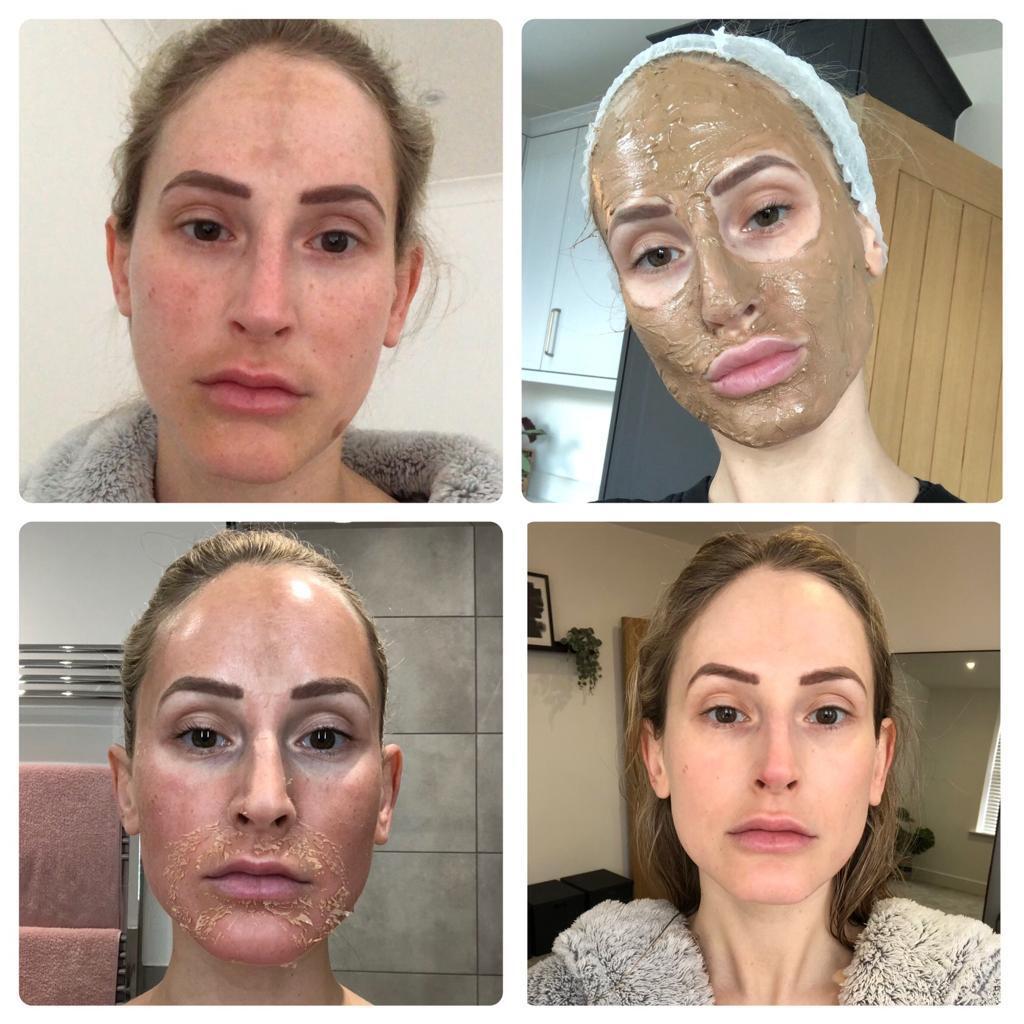
How it works
The treatment consists of 4 phases that turn it into a protocol for the elimination and control of hyperpigmentation rather than a one-time remedy. The cosmelan® peel visibly removes and attenuates dark spots like a peel, but it most importantly works by inhibiting melanin production which is responsible for the dark pigmentation seen on the skin as a response to UV exposure, hormones, ageing, and acne. By inhibiting a specific type of enzyme e.g. tyrosinase that is directly involved in the production of melanin, Cosmelan can reduce melanin production and the discoloration it causes in the skin and help prevent their recurrence. Free of hydroquinone, a cosmelan peel consists of ingredients well-known to inhibit tyrosinase, the natural enzyme that promotes pigmentation–hence their use for treating hyperpigmentation, including melasma, post inflammatory hyperpigmentation and sunspots.
Phase 1: Intense depigmentation
Treatment begins with the in-office application of the cosmelan 1 mask by Dr Hudson which produces intensive removal of the melanin deposits within the skin. The Cosmelan 1 mask is worn for a period of between 8 to 12 hours. Dr. Hudson determines the duration depending on the patient’s skin tone and the severity of the hyperpigmentation present. Once the designated amount of time has elapsed, the Cosmelan mask is easily removed at home by the patient using a gentle facial cleanser. A follow-up appointment will be made in four weeks’ time so Dr. Hudson can assess the progress.
Phases 2, 3 and 4: Depigmentation, regulation, and control
Following application of the Cosmelan 1 mask, patients adhere to a home care regimen consisting of the use of depigmenting and anti-aging skincare products. Which are provided to the client before they leave the office. This is part of the depigmentation process and serves to prevent the recurrence of hyperpigmentation and spots. The protocol includes:
• Cosmelan 2 cream: facial cream for removing and/or reducing spots of melanic origin.
• Melan recovery: a soothing and calming skin balm that rebalances and restores the skin barrier.
• Melan 130 pigment control: a tinted facial sunscreen with high solar protection which helps regulate melanin synthesis and keeps the skin hydrated and protected.
The Cosmelan 2 cream is a depigmenting cream that contains a blend of brightening ingredients, including kojic acid, azelaic acid, vitamin C, retinoids, and hydroquinone. The ingredients in Cosmelan 2 can be very irritating, particularly if you have sensitive skin. If the cream does cause severe skin irritation, it should be discontinued for several days until it resolves completely. Failure to comply with these instructions can cause increased skin irritation and hyperpigmentation. Since the Cosmelan depigmentation protocol aims to lessen and eliminate hyperpigmentation, it is counter-productive to continue using Cosmelan 2 if your skin is irritated.
To achieve and maintain the best cosmetic results, it is important that both during and after the Cosmelan peel, patients limit sun exposure and use proper sun protection. Melanocytes, the skin cells responsible for producing melanin (pigment), are triggered by UV exposure. Sun exposure to the treatment area can worsen the appearance of brown spots even after the Cosmelan treatment is completed. Dr. Hudson recommends the use of a broad-spectrum sunscreen with a minimum SPF of 50, which should be reapplied every ninety minutes. A chemical-based sunscreen should be applied underneath a mineral sunscreen for the best sun protection. Chemical sunscreens contain active ingredients such as avobenzone, and mineral sunscreens contain zinc oxide or titanium dioxide.
faqs
After thoroughly cleaning your face, Dr Hudson will apply the thick Cosmelan® mask. The peel will be applied over your entire face, though it will only affect the blotchy or discolored areas of skin. The process takes about 30 minutes. At that point you will head home for some rest and relaxation. You will be given a precise time at which to remove the mask using a gentle cleanser. After removing the mask, you will begin your home post care regimen. You will need to apply a soothing cream a couple times daily for about two weeks, before eventually transitioning to just once daily. About two or three days after your Cosmelan® depigmentation treatment, your face should begin peeling. This is natural and normal. You will begin seeing results shortly thereafter.
The Cosmelan Peel is an intensive resurfacing treatment which requires up to 10-12 days of downtime. Your skin will be red, swollen, and warm for the first 3 days post treatment. Peeling occurs on Day 3. Peeling and dryness can be expected for up to 7- 10 days. Sun exposure is to be avoided throughout this period with an SPF 50 to protect your skin and your results. All post care products are included in your treatment price which will help speed up the healing phase.
Side effects with Cosmelan treatments are rare but easily managed. Skin may feel a little red following removal of the in-clinic mask. This may be accompanied by some minor skin dryness and flaking. Any skin tightness may be easily relieved by applying a nourishing skin moisturizer such as the Melan Recovery Balm – which is supplied in your post treatment homecare kit. It is recommended to avoid direct sun exposure following a Cosmelan treatment and to wear a broad spectrum SPF30 every day before, during and following treatment.
Results can be seen in as little as 2 weeks post treatment or up tp 4-8 weeks post treatment depending on the severity of the hyoperogmentation and skin concerns.
During and after the Cosmelan depigmentation treatment, it is crucial to utilize proper sun protection, including two types of sunblock and protective clothing like a hat, to maintain the best cosmetic results. Hyperpigmentation and melasma can return after treatment if there is sun exposure to the treatment area. The duration of results from a Cosmelan treatment can be prolonged with proper care, especially for sun-damage pigmentation, by protecting the skin from sunlight. However, pigmentation with a hormonal component, like melasma, may recur as this condition is extremely senstive to sun exposure. The use of a pigment inhibitor to down regulate melanocytes from producing pigmentation is recommended.
For most clients, the Cosmelan peel is typically performed as a single treatment. Significant results are seen after only one treatment. However, those with severe melasma may require more than one peel to see optimal results. Initial treatments are typically three months apart, and the Cosmelan peel can be repeated on a yearly basis to maintain smooth and supple skin.
results
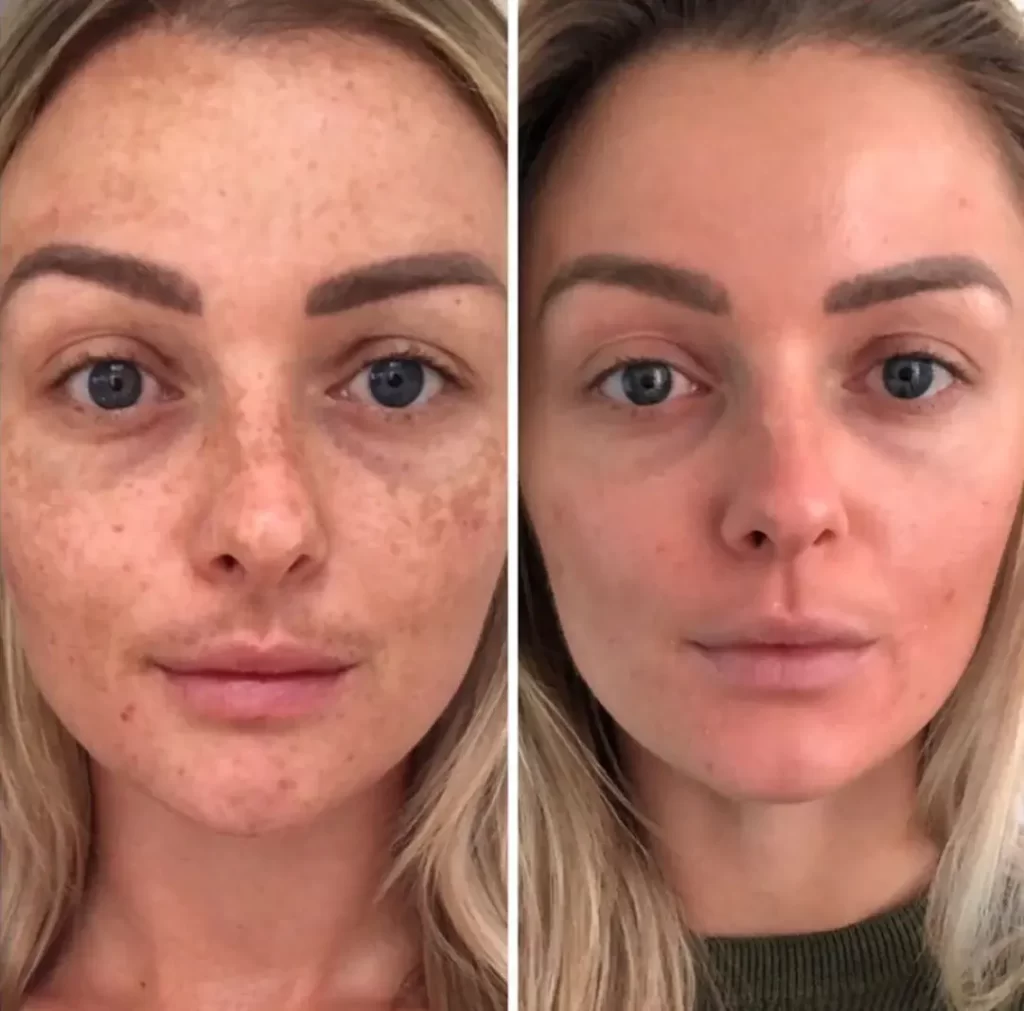
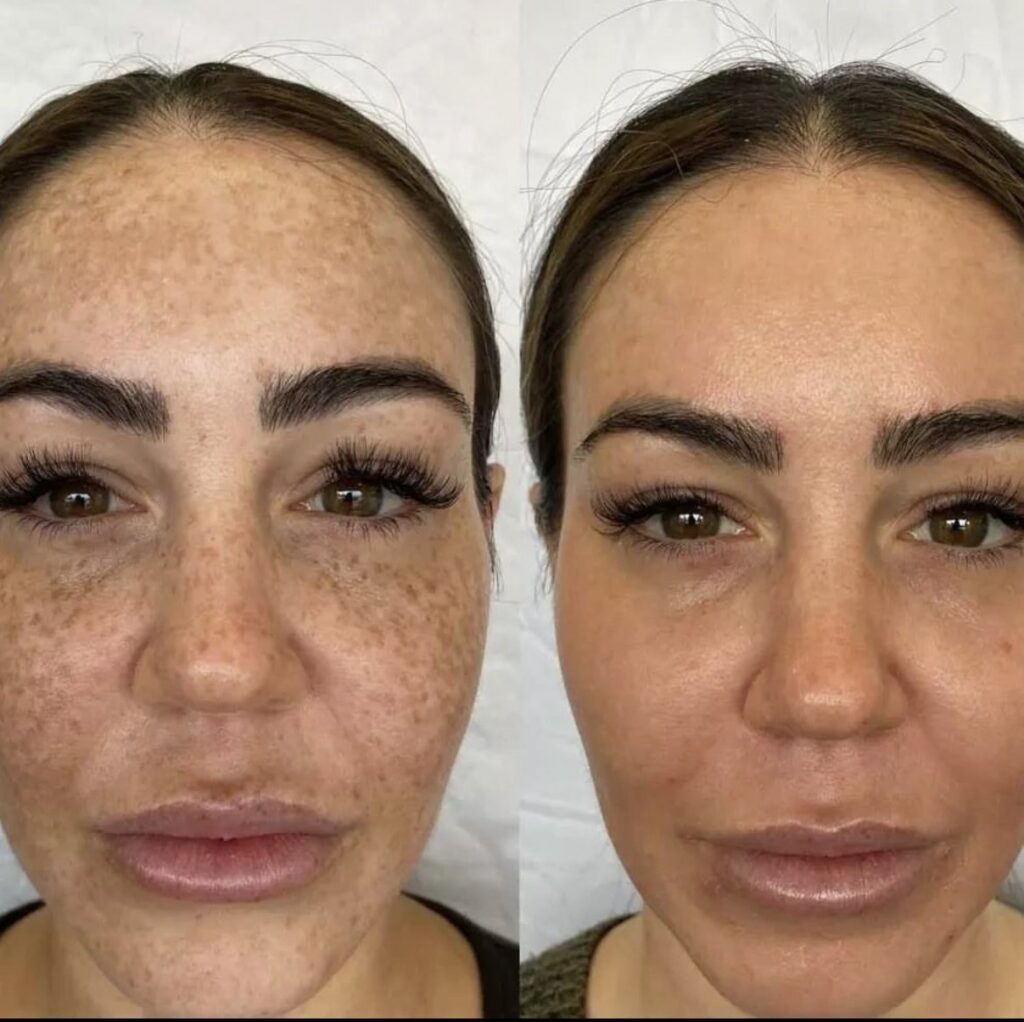
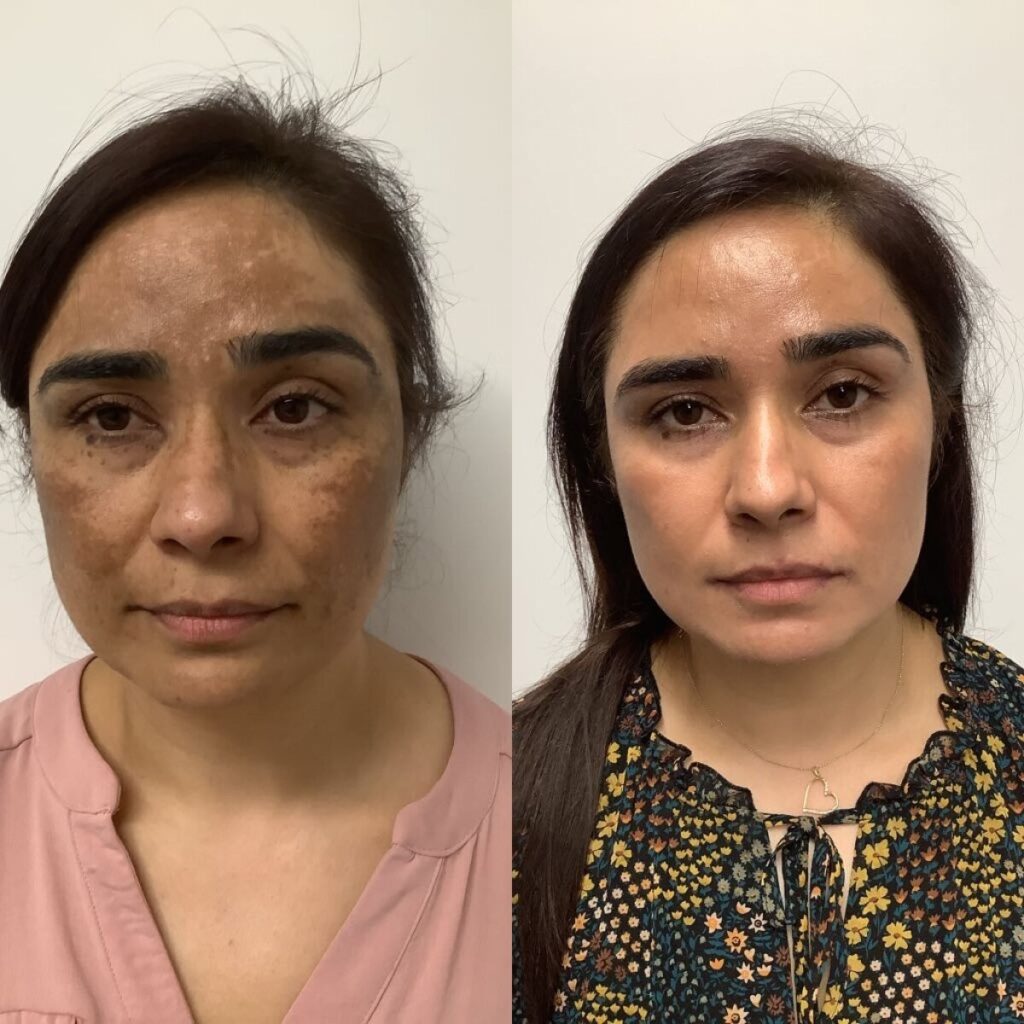
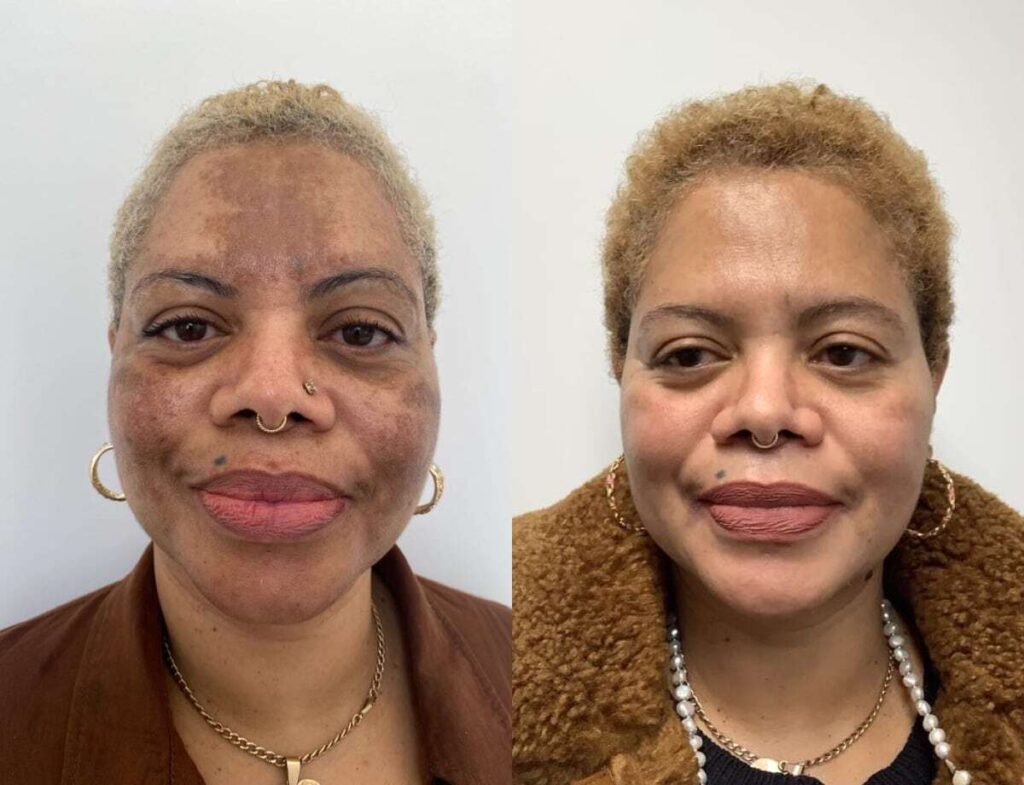
*Individual results may vary with different patient experiences.
*A series of treatments may be required for desired results.
